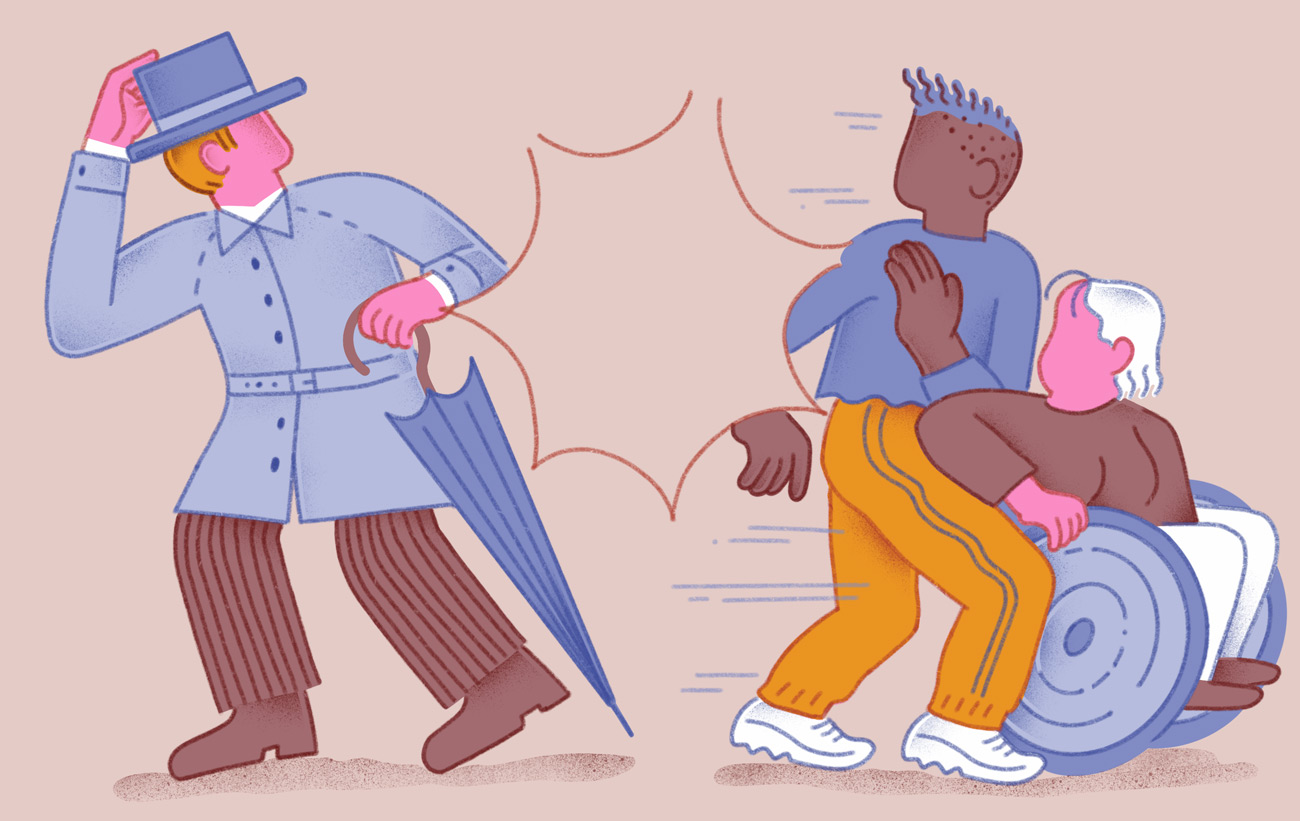

It has made me part of the routine to show the photos of our city. I take out my cell phone, I look for a census plane with the three beaches, and I say, "here alive." In a deception like that, they told me that yours is a city for a walk.
In the literature there is a figure associated with the walker: the flâtama. She was born in 19th-century Europe, contemporary to modern cities, but I am convinced that the present San Sebastian would also welcome her. Flâtama is an anonymous city walker. People are walking peacefully through the wave, walking, as if not in the direction. Watch others with paused gaze, without anyone seeing them. This anonymous and incidental look has often been paid a tribute in which interesting and sensitive portraits of the city have been sought.
The figure is truly romantic, idyllic. As it could not be otherwise, this city of the postcard would put a red carpet on the flâte. A white railing, the Boulevard that runs every morning, the tamarinds of Alderdi Eder, the slabs of the Damas Battery, the bridges of stone angels and lion heads, the bank of the Seine River.
However, as many have pointed out, the calm and pleasure of the flâte are not available to everyone. J. Wolf and J. Walcowickz explained that drifting was a male and bourgeois privilege, and I would like to add the white. Parkhustu said that women could not walk without being seen, because they were the mirror for male gaze. Helena Swanick recalled the emphasis on her home: if she walks only in the streets of the city, she will be confused with a prostitute.
I can easily imagine Donostiarra 'flâneur'. You will sit behind the walk on the terrace of Tabakalera, accompanied by an expensive coffee, to watch those circulating in the square
I can easily imagine the flâneur donostiarra. After the walk you will sit on the terrace of Tabakalera, accompanied by an expensive coffee, to observe those who circulate in the plaza. But it is difficult for the young man who has been left in two out of three steps in the same square to move calmly. Or the one who goes urgently from work to kindergarten. Or pushing a wheelchair. Or hold your partner down your arm and not, better on the other side, say what you've gotten used to.
In contrast to the flâmed, the figure of the flâneus appears. In general, it was embodied by the bourgeois woman of the 19th century. In modern galleries and shops, it was possible for women of a particular class to go unattended for once. I am convinced that the flâneus, at least the one drawn like this, would be well received by San Sebastian.
However, Irati Majuelo has explained the need to go one step further with flâneus. He asks whether we could imagine, for example, flâneusequeer or flâneus boller. I've exercised and put my friends' faces on them. Rather than alone, they grab each other. More convulsive than unconscious. Instead of sweet coffee, they ask for marianito. And they talk so they get excited and they hear entire terraces.
And as I imagine the delicious flâneus, I've also agreed with our mother. He's a passionate walker, but he prefers non-bright hallways. It goes from Riberas de Loiola to Hernani, Gros to Pasaia or Errenteria. It immerses itself in its tasks more than it would like. Drink coffee in the bar where the boat crosses with the worker. When he's in humor, he asks for a carajillo with Sovereign cognac and sugar. He always does so when he meets his best friend.
Faced with the stretched flâneur, it prefers a city oppressed by these others. The looks that do not fit in the postcards will probably be the most interesting and emotional.